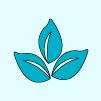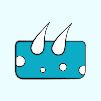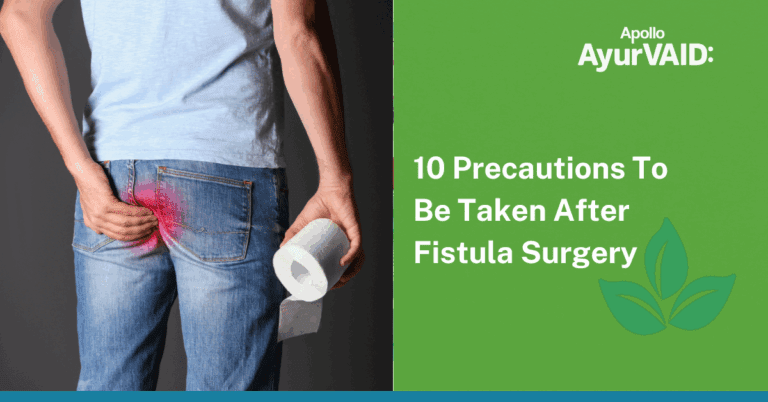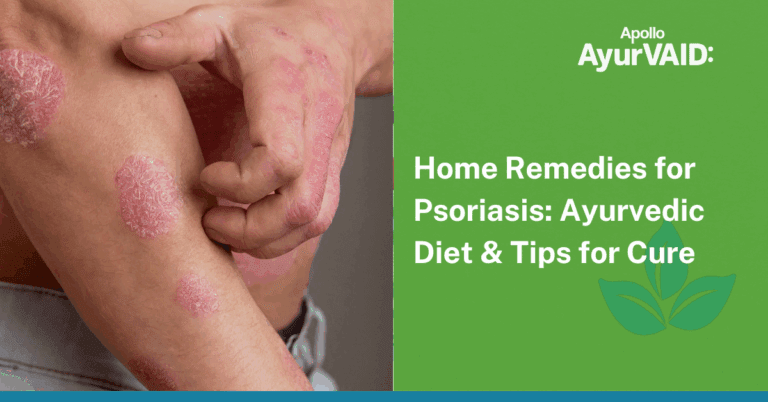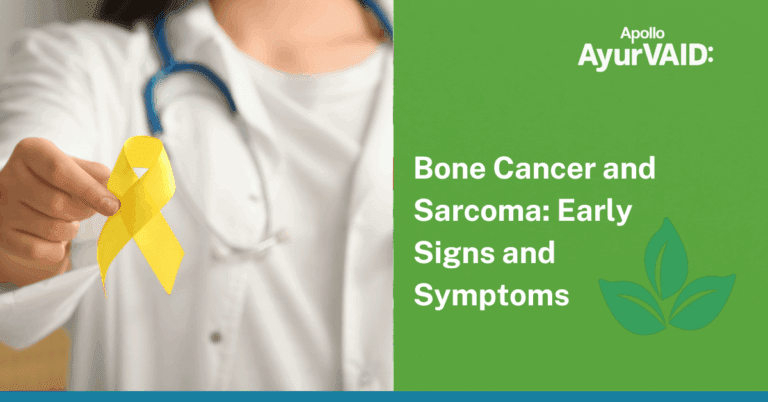Introduction
Muscular dystrophy is a group of hereditary diseases that gradually weaken the muscles. Because of this, even the most fundamental tasks become challenging. Muscle atrophy may make the patient’s breathing, heart rate, and mobility more difficult over time.
Conventional therapy may alleviate symptoms, but there is a holistic management approach to halt the progression of the disease and improve quality of life. Ayurvedic treatment for muscular dystrophy goes beyond symptomatic relief since it takes a systemic approach by slowing the rate of muscle degeneration and increasing muscle strength. Although a muscular dystrophy cure in Ayurveda does not exist, it can help with muscle regeneration, improve tissue metabolism, and even delay further deterioration.
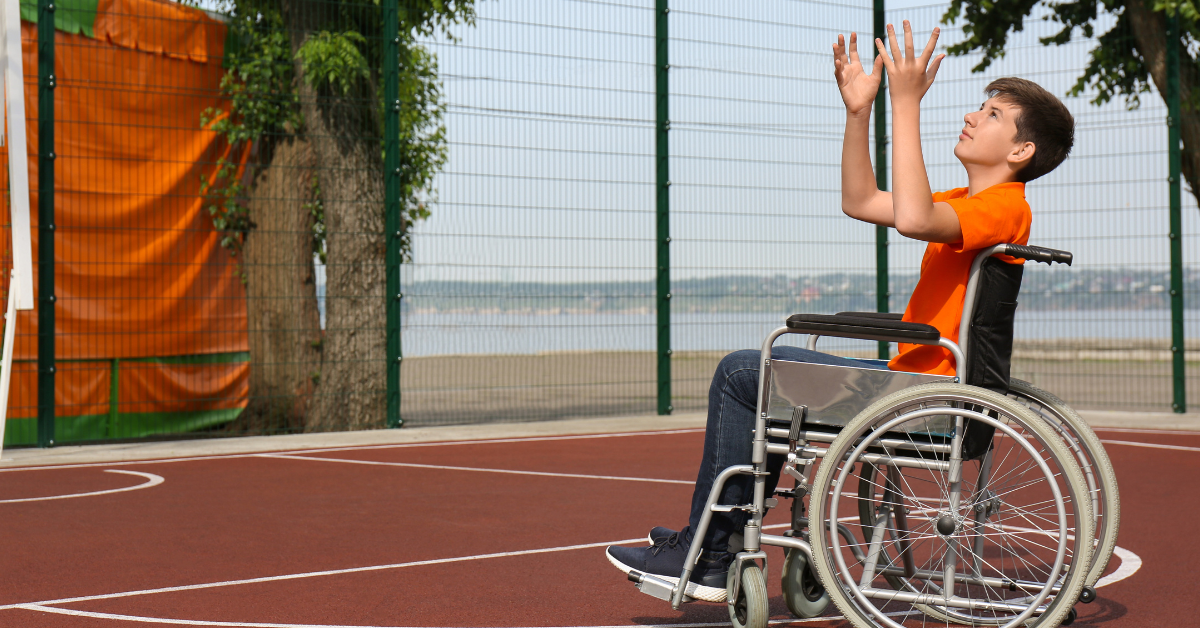
What Triggers Muscular Dystrophy?
Muscular dystrophy is primarily caused by a genetic abnormality that affects muscle protein structure and function. Without these proteins, muscles gradually deteriorate and atrophy. A lack of dystrophin, a crucial protein protecting muscle cells, causes Duchenne muscular dystrophy (DMD), the most common type.
The following factors also have a role:
- Incorrect calcium metabolism inside muscle cells leads to damage and inflammation.
- An imbalance in muscle repair can hamper the repair of muscle proteins, leading to muscle loss.
- Hereditary mutations cause certain forms of muscular dystrophy and tend to run in families.
- Other factors, such as problems with energy production in cells (mitochondrial dysfunction), chronic inflammation, or even an imbalance in gut bacteria, can play a significant role.
Read more about Muscular Dystrophy: symptoms, causes and treatment here.
Multiple Muscle Dystrophy - Types
There are several forms of muscular dystrophy, and their progression patterns are distinct from one another:
- Duchenne muscular dystrophy (DMD) often manifests in childhood and is more common in boys than in girls.
- Becker muscular dystrophy (BMD) is a milder form of Duchenne muscular dystrophy (DMD).
- Myotonic dystrophy affects several bodily systems and causes muscles to become rigid.
- Limb-girdle muscular dystrophy causes weakening of the hip and shoulder muscles.
- Facioscapulohumeral muscular dystrophy (FSHD) causes atrophy of muscles of the face, shoulders, and upper arms
- Congenital muscular dystrophy (CMD) causes muscle weakness at birth due to a genetic mutation.
The Ayurvedic treatment for muscular dystrophy is tailored to specific types, and signs and symptoms. Muscular dystrophy symptoms might vary in nature and stage of development. However, common signs consist of:
- Problems with gait or running
- Weakness in muscle mass and coordination
- Clumsiness, frequently falling, or having trouble climbing stairs
- False hypertrophy, or the buildup of excess fat, causes the calf muscles to lengthen
- Complications with breathing in later stages
- Curvature of the spine, or scoliosis, may develop in certain people.
- Movement becomes more restricted as the illness progresses, making early care crucial.
Muscular Dystrophy from an Ayurveda Perspective
According to Ayurveda, an imbalance of Vata dosha affects both the Medo Dhatu (fat tissues) and the Mamsa Dhatu (muscle tissue), leading to muscular dystrophy. The result is a gradual weakening, atrophy, and rigidity of the muscles. Adibala Pravritta Vyadhi, which translates to “inherited diseases,” discusses conditions similar to muscular dystrophy in ancient texts.
In contrast to conventional medicine, which focuses only on alleviating symptoms, Ayurvedic treatment for muscular dystrophy takes a more comprehensive view of health. It aims to nourish muscles, restore balance, and prevent degeneration using a combination of external treatment, internal medications, and lifestyle adjustments. Let us now explore how Ayurveda manages Muscular Dystrophy.
Ayurvedic Treatment for Muscular Dystrophy
A muscular dystrophy cure in Ayurveda does not exist, but it has remedies that help strengthen muscles, reduce stiffness, and stop the progression. Three primary concepts are emphasised:
- Srotoshodhana means “channel cleansing” since it removes blockages from microchannels, allowing more nutrients to reach muscles.
- Muscle atrophy is slowed and prevented by Dhatwagni Deepana (enhancing tissue metabolism).
- Brumhana Chikitsa (nourishing therapy) is a method for strengthening muscles with diet and herbal remedies.
A wide range of therapies can be implemented based on the health status.
- Abhyanga (oil therapy) is a great way to nourish muscles, increase blood flow, and alleviate stiffness.
- Swedana (Herbal steam treatment) relaxes muscles, reduces pain, and increases flexibility.
- Shastika Shali Pinda Sweda (Rice Bolus Massage) involves massage with a special variety of red rice and herbal decoctions that promote tissue nourishment.
- Udvartana (massage with herbal powder) improves lymphatic circulation, increases nerve activity, and alleviates stiffness.
- Panchakarma Ayurvedic treatment for muscular dystrophy, like Vasti (medicated enema), balances Vata and revitalises tissues.
Herbal supplements and internal medicines with Rasayana (rejuvenation) properties are prescribed to strengthen tissues and reduce muscle atrophy.
Muscular Dystrophy: Apollo AyurVAID's Approach
Ayurvedic treatment for muscular dystrophy at Apollo AyurVAID begins with a comprehensive assessment of the patient’s condition, medical history, and progression of symptoms. The approach is not just about symptomatic relief — it is about addressing the root cause, improving metabolism, and slowing down muscle degeneration. The treatment is personalised based on the specific type of muscular dystrophy, severity, and Prakriti (individual constitution). The treatment strategy includes:
- Breaking the Disease Pathogenesis: Our precision Ayurveda approach focuses on correcting the imbalance of Vata Dosha, which plays a crucial role in muscle degeneration.
- Correcting Metabolic Imbalances: Agni Dushti (Digestive and metabolic irregularities) are corrected through Deepana-Pachana (digestive stimulants and detoxification) to enhance nutrient absorption and tissue regeneration.
- Strengthening Muscles and Nerves: A combination of external therapies, internal medications, and dietary modifications nourishes muscles, improves neuromuscular coordination, and delays disease progression.
Rehabilitation & Supportive Care
Apollo AyurVAID integrates Ayurveda with physiotherapy to improve movement and quality of life. A personalised rehabilitation plan includes:
- Therapeutic Yoga and Stretching Exercises – To maintain flexibility and prevent contractures.
- Pranayama (Breathing Exercises) – To enhance lung capacity and oxygenation.
- Dietary Guidance – Foods that balance Vata, improve digestion, and provide essential nutrients for muscle strength.
- Regular Monitoring and Follow-ups – Ensuring sustained improvement and timely modifications in treatment.
Conclusion
Muscular dystrophy remains a challenging condition with no definitive cure. However, Ayurvedic treatment for muscular dystrophy provides hope by focusing on muscle wasting, treatment strategies that nourish tissues, improve mobility, and slow progression. Through muscle-wasting Ayurveda treatments, we can enhance muscle health and improve the quality of life of muscular dystrophy patients.
Early intervention with Ayurveda can make a meaningful difference for those exploring alternative approaches. Apollo AyurVAID brings evidence-based Ayurvedic treatment for muscular dystrophy to help individuals delay the disease progression and live more comfortably.

References
- Arora, S, Arora, C (2022). A REVIEW ON CONCEPTUAL STUDY OF MUSCULAR DYSTROPHIES: AN AYURVEDIC PERSPECTIVE. International Journal of Research in Ayurveda and Pharmacy. https://doi.org/10.7897/2277-4343.130121
- Russo, C et al. (2024). The Gut Microbiota Involvement in the Panorama of Muscular Dystrophy Pathogenesis. International Journal of Molecular Sciences, 25. https://doi.org/10.3390/ijms252011310
- Shalini, D, Alam, J (2024). Muscular Dystrophies: An Update Review. International Journal of Innovative Science and Research Technology (IJISRT) https://doi.org/10.38124/ijisrt/ijisrt24may507
- Konieczny, P. (2024). Systemic Treatment of Body-Wide Duchenne Muscular Dystrophy Symptoms. Clinical pharmacology and therapeutics. https://doi.org/10.1002/cpt.3363
- Dosani, M, Singhal, H (2024). An Ayurvedic Approach in Muscular Dystrophy in Children. International Journal of Health Sciences and Research. https://doi.org/10.52403/ijhsr.20240318’
- Rathi, R. et al. (2023). Relevance of Ayurveda Management in Duchenne Muscular Dystrophy to Augment the Quality of Life- A Pediatric Case Report. International Journal of Life Science and Pharma Research. https://doi.org/10.22376/ijlpr.2023.13.5.l322-l330

